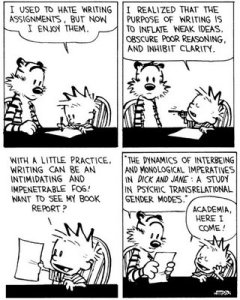Today I want to examine a critique made by Sharon Crowley in the Fall 2003 Enculturation. Her title is “Composition Is Not Rhetoric.” Her argument is essentially that while a brief interest in rhetoric flourished during the period of classical-rhetoric revival in the 60s and 70s, it came and went without having much effect on classroom practices, which held to a current-traditional framework. The actual historical connection between writing instruction and rhetorical education, Crowley asserts, was severed by the same late-nineteenth century Arnoldian humanists who instituted the first-year composition requirement. Textbooks and academic studies by authors like P. J. Corbett continue to be read by graduate students entering the profession, but have neither become popular texts in these classes or had much effect on their practices. The invocation of rhetoric has improved the academic prestige of composition and those who teach it by connecting the field to a long-established discourse and opening new avenues of research, historical inquiry among them, but while professionals in the field enjoy an improved position within the university, the practices of composition classrooms have little to do with rhetoric.
While composition justifies its assertion of an association with rhetoric by reference to the inclusion of written composition as a subject among the texts of classical rhetoric, composition as it is actually taught is not rhetorical, because it does not draw on rhetoric’s emphasis on invention, which Crowley defines as “the systematic discovery and investigation of the available arguments in a given situation.” Nor does composition at present “conceive of the arguments generated by rhetorical invention as both produced and circulated within a network of social and civic discourse, images, and events.” Lastly, composition is not rhetoric because of its failure to intervene in the social discourse of its context: “any practice entitled to be called “rhetoric” must intervene in some way in social and civic discursive networks.” Crowley does acknowledge that some practices under the banner of composition aim at social intervention, but notes that the approaches in composition studies that do so draw on Marxist theory and cultural studies rather than rhetoric (and here it seems reasonable to ask whether these other theoretical approaches might not be capable of rhetorical practices).
Having defined rhetoric as a heuristic process that emphasizes participation in civic discourse, Crowley describes composition classrooms as being based on expressivist assignments in which students are asked to write from their experience and then presumably evaluated according to current-traditional criteria of arrangement and style (I’ll note in passing that these features are themselves elements of the traditional rhetorical canon, if only the leftovers once invention is removed from the criteria). Crowley associates this expressivist tendency with process pedagogy, and sees it as an abdication of the traditional emphasis within rhetoric on engagement with civic discourse. Additionally, Crowley sees this process-oriented expressivist composition pedagogy as bereft of the rhetorical category of invention. Thus, because it features neither invention nor civic engagement, composition pedagogy as it exists today, or at least in 2004, is not, on Sharon Crowley’s terms, rhetoric.
I think it’s excellent that such a critique should come from within the field. The link between composition and rhetoric, whatever it may be, seems to have the status of an important on-going problem related to the field’s emerging identity, not in the sense that such a problem will be definitively resolved and the field’s identity established for good, but in the sense that this problem, no doubt in several permutations, has been a defining problem for the field for decades, ever since the question of rhetoric was reintroduced, and different answers to this problem have produced a variety of identities and movements within the field, often operating simultaneously. Sometimes, as Crowley’s critique indicates, different simultaneously extant responses to this problem may be mutually exclusive, such that one particular identity established in response to this question may be founded on the denial of the validity of other responses. In this case, Crowley relies on a definition of rhetoric drawn from Charles Sears Baldwin to counter the narrative of rhetoric’s retreat and return.
Baldwin draws a distinction between rhetoric, associated with invention and truth, and sophistry, associated with superficial stylistics:
“what has intervened to deviate rhetoric and frustrate its best use has again and again been the preoccupation with giving effectiveness not to the message, but to the speaker.” (quoted in Crowley)
Crowley speculates that Balwin’s critique of sophistry, concerned not with advancing good arguments but with making the speaker persuasive, might have been an indirect critique of the expressivist turn in composition pedagogy that was prevalent in his time (Crowley suggests that expressivist pedagogies continue to exert influence; this hasn’t been my experience, but my institution may be an exception, or, more likely, the discrepancy could be the result of a shift in institutional trends since Crowley’s article).
But while composition pedagogy may fall short of being rhetorical, Crowley does add that “As far as I can see, there is no necessary reason that rhetoric could not be taught in this course,” leaving open the possibility of a future rhetoric-composition that does emphasize invention and intervention in discourse. This rhetorical-composition-to-come is the challenge Crowley’s article makes, and the promise it simultaneously offers.




